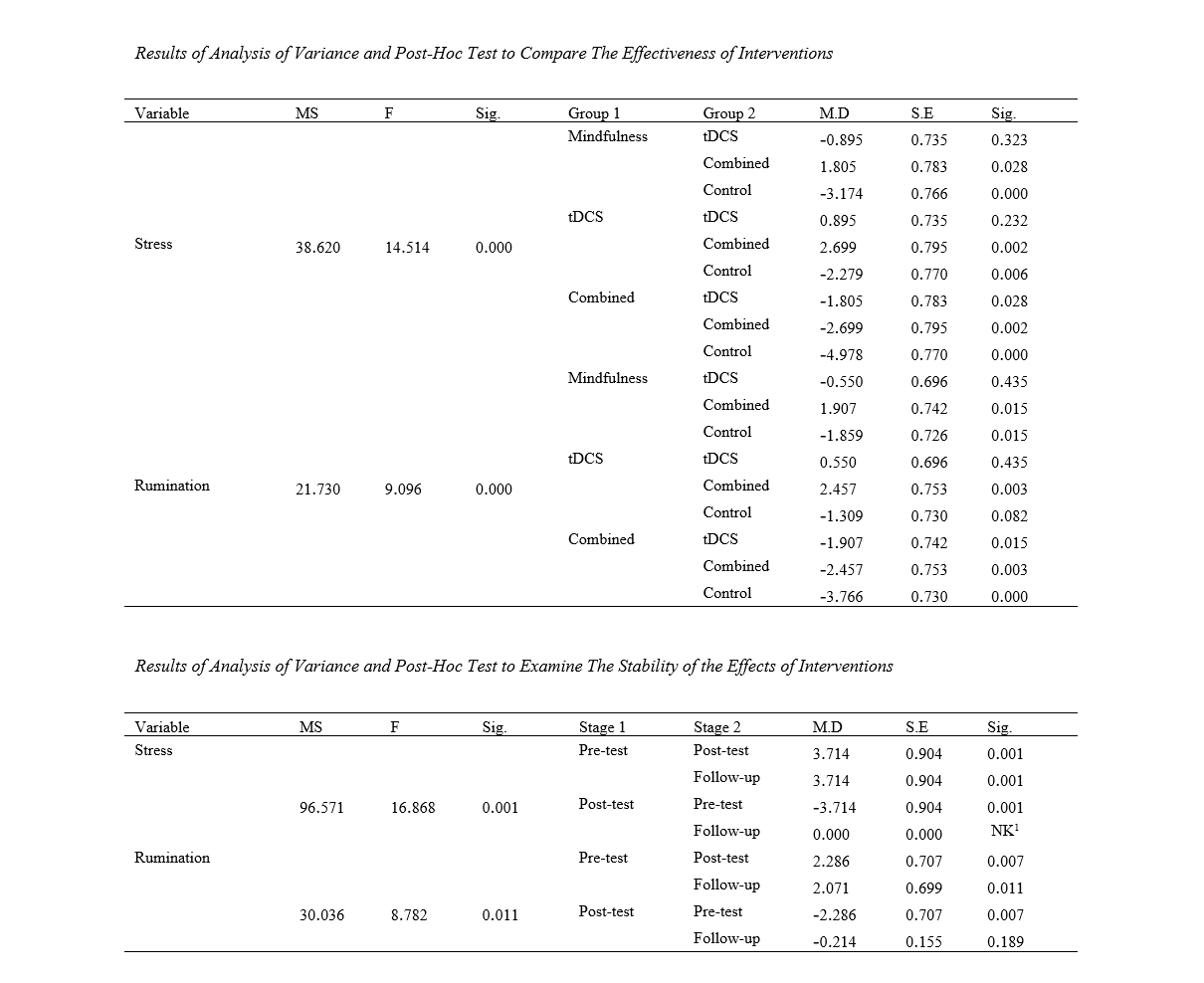Comparison of the Effectiveness of Mindfulness-Based Stress Reduction Program with Transcranial Direct Current Stimulation on Stress and Rumination in Adolescents with Cancer
Abstract
Objective: Considering the necessity to identify effective interventions to improve stress and rumination in students, the current study aimed to compare the effectiveness of a mindfulness-based stress reduction program with transcranial direct current stimulation (tDCS) on stress and rumination in adolescents with cancer.
Methods and Materials: The research method was a quasi-experimental pre-test and post-test with a control group design. The research population included all adolescents with cancer at Mahak Hospital in Tehran, from which 40 individuals were selected through purposive sampling and randomly assigned to three groups (1- Mindfulness-based stress reduction training; 2- Transcranial direct current stimulation intervention; 3- A combined method of mindfulness-based stress reduction with transcranial direct current stimulation) and one control group. The instruments for data collection included the Lovibond and Lovibond's (1995) Depression, Anxiety, and Stress Scale and the Ruminative Response Scale about an interpersonal upset (2008). For data analysis, one-way analysis of covariance, repeated measures analysis of variance, and the least significant difference post-hoc test were used.
Findings: The results of the covariance analysis along with the post-hoc tests showed that there is no significant difference between the mindfulness-based stress reduction method and tDCS in reducing stress levels (P>0.05), and only the difference between these methods compared to the control group was significant (P<0.05). In terms of the effectiveness of the interventions under study on stress levels, the combined method was more effective than using each method separately. Regarding the rumination variable, there was no significant difference between the mindfulness-based stress reduction method and the tDCS method in reducing the level of rumination (P>0.05), and only the difference of this mindfulness method compared to the control group was significant (P<0.05). The results of the repeated measures analysis of variance along with the post-hoc tests indicated that there were no significant differences between the post-test and follow-up stages for stress and rumination variables (P>0.05); hence, the results were stable.
Conclusion: Based on the results of the current study, counseling and psychology units established in hospitals and oncology clinics need to be more aware of the mental health of adolescents with cancer and should use the combined method of mindfulness-based stress reduction with tDCS to improve stress and rumination in adolescents with cancer.
Downloads

Downloads
Additional Files
Published
Issue
Section
License
Copyright (c) 2024 Edris Ahmadi (Author); Mohammad Hatami (Corresponding Author); Hadi Hashemi Razni, Mozhgan Sepahmansour (Author)

This work is licensed under a Creative Commons Attribution-NonCommercial 4.0 International License.








